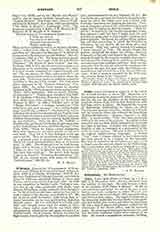

O’Devany, CORNELIUS (CONCHOBHAR O’DUIB-HEANNAIGH), Bishop of Down and Connor, Ireland, b. about 1532; d. at Dublin, February 11, 1612 (N. S.). He was a Franciscan of Donegal Convent, and while in Rome in 1582 was appointed Bishop of Down and Connor, and consecrated February 2, 1583. In 1588 he was committed to Dublin Castle. Failing to convict him of any crime punishable with death, Lord Deputy Fitzwilliam sought authority from Burghley to “be rid of such an obstinate enemy to God and so rank a traitor to her Majesty as no doubt he is”. He lay in prison until November, 1590, being then released ostensibly on his own petition but doubtless through policy. He was protected by O’Neill until 1607, and escaped arrest until the middle of 1611, when, almost eighty years old, he was taken while administering confirmation and again committed to Dublin Castle. On January 28, 1612, he was tried for high treason, found guilty by the majority of a packed jury, and sentenced to die on February 1 (O. S.). He was drawn on a cart from the Castle to the gallows beyond the river; the whole route was crowded with Catholics lamenting and begging his blessing. Protestant clergymen pestered him with ministrations and urged him to confess he died for treason. “Pray let me be”, he answered, “the viceroy’s messenger to me here present, could tell that I might have life and revenue for going once to that temple”, pointing to a tower opposite. He kissed the gallows before mounting, and then proceeding to exhort the Catholics to constancy, he was thrown off, cut down alive, and quartered. With him suffered Patrick O’Loughran, a priest arrested at Cork. The people, despite the guards, carried off the halter, his clothes, and even fragments of his body and chips of the gallows. They prayed all night by the remains, an infirm man was reported cured by touching them, and Mass after Mass was said there from midnight until day. Such was the concourse that the viceroy ordered the members to be buried on the spot, but next night the Catholics exhumed them and interred them in St. James’s Church-yard. A list of martyrs compiled by Dr. O’Devany was used by Rothe in his “Analecta”.

